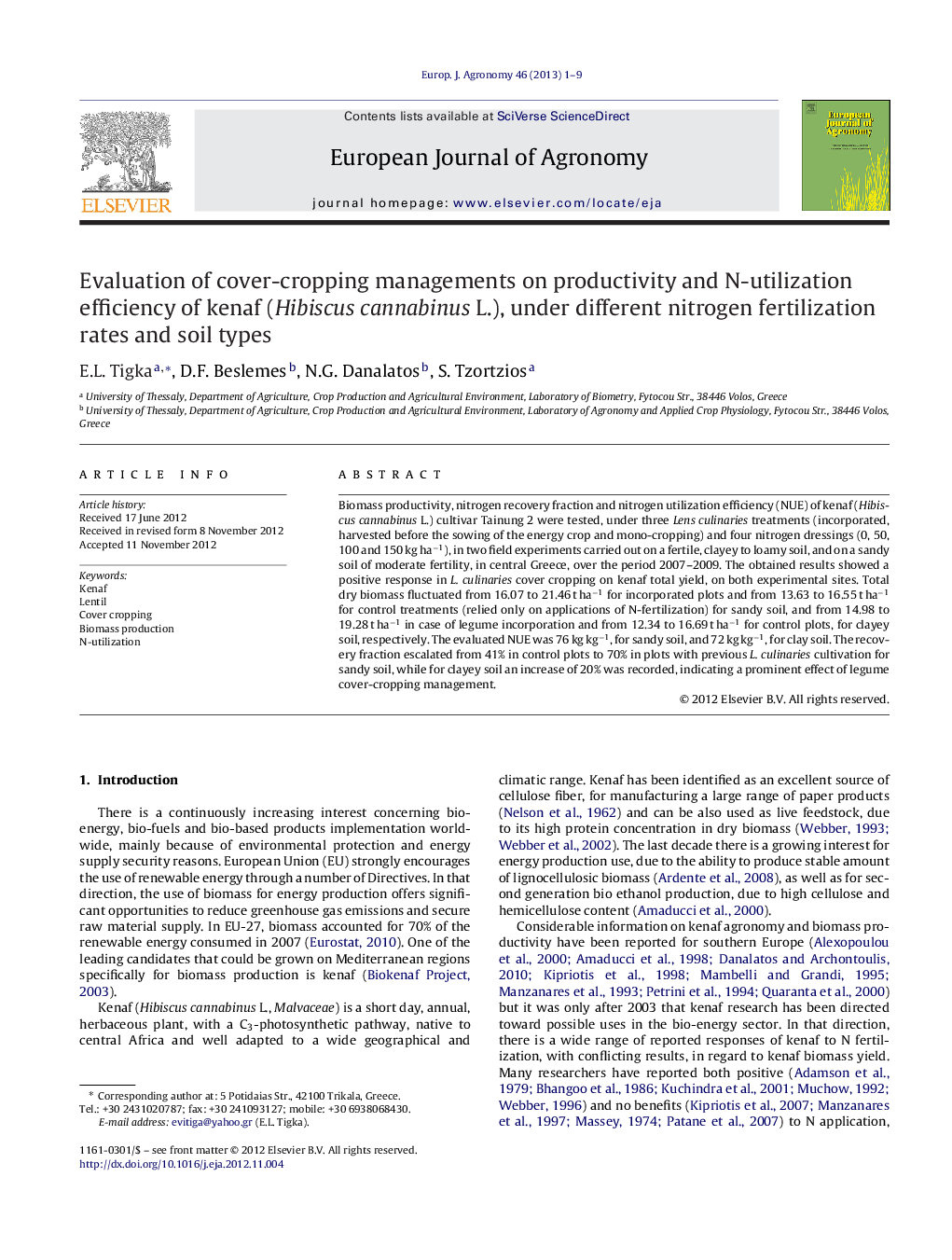| Article ID | Journal | Published Year | Pages | File Type |
|---|---|---|---|---|
| 4509116 | European Journal of Agronomy | 2013 | 9 Pages |
Biomass productivity, nitrogen recovery fraction and nitrogen utilization efficiency (NUE) of kenaf (Hibiscus cannabinus L.) cultivar Tainung 2 were tested, under three Lens culinaries treatments (incorporated, harvested before the sowing of the energy crop and mono-cropping) and four nitrogen dressings (0, 50, 100 and 150 kg ha−1), in two field experiments carried out on a fertile, clayey to loamy soil, and on a sandy soil of moderate fertility, in central Greece, over the period 2007–2009. The obtained results showed a positive response in L. culinaries cover cropping on kenaf total yield, on both experimental sites. Total dry biomass fluctuated from 16.07 to 21.46 t ha−1 for incorporated plots and from 13.63 to 16.55 t ha−1 for control treatments (relied only on applications of N-fertilization) for sandy soil, and from 14.98 to 19.28 t ha−1 in case of legume incorporation and from 12.34 to 16.69 t ha−1 for control plots, for clayey soil, respectively. The evaluated NUE was 76 kg kg−1, for sandy soil, and 72 kg kg−1, for clay soil. The recovery fraction escalated from 41% in control plots to 70% in plots with previous L. culinaries cultivation for sandy soil, while for clayey soil an increase of 20% was recorded, indicating a prominent effect of legume cover-cropping management.
► Kenaf cover cropped with lentil is compared to monocrop cultivation. ► Field experiments were conducted on two soil types, for three years. ► Effect on biomass yield and nitrogen utilization efficiency is examined. ► Increments in total dry biomass production were observed for cover cropping. ► Increased NUE in plants is vital to enhance both yield and quality of crops.
